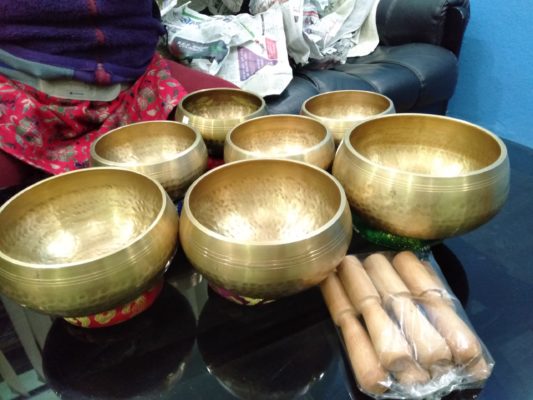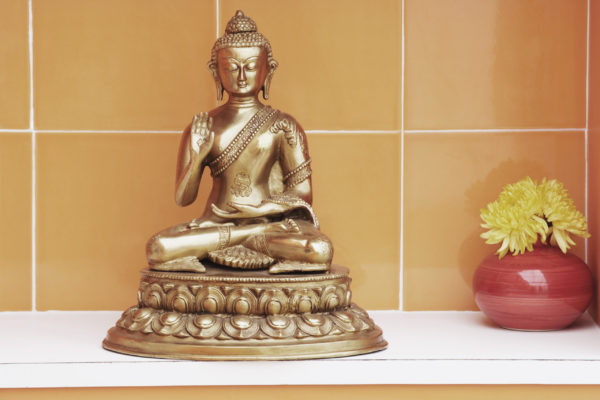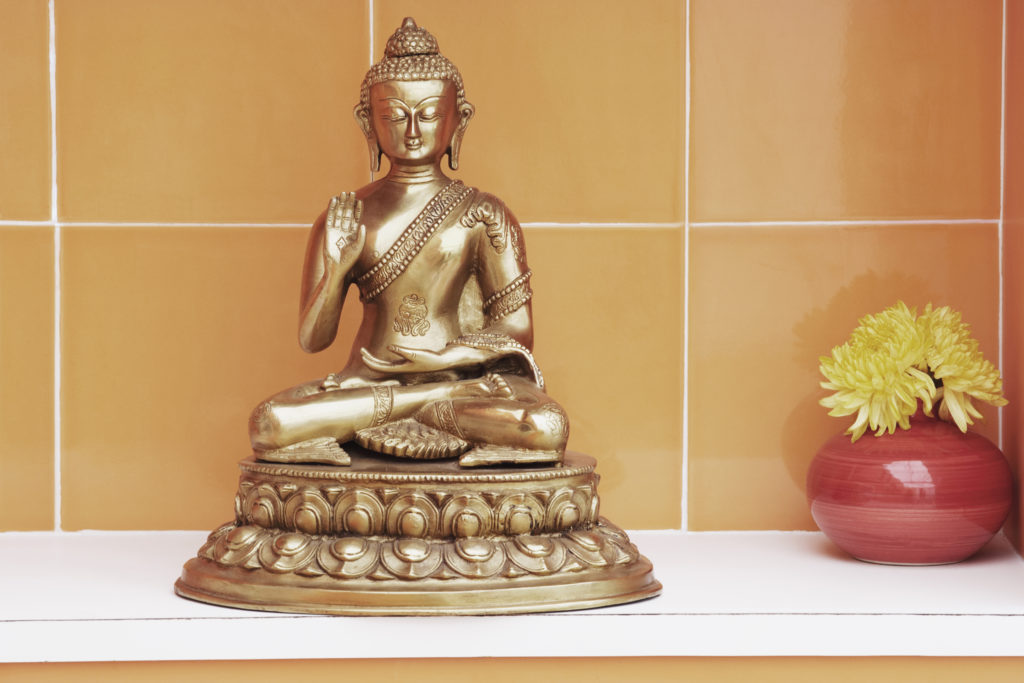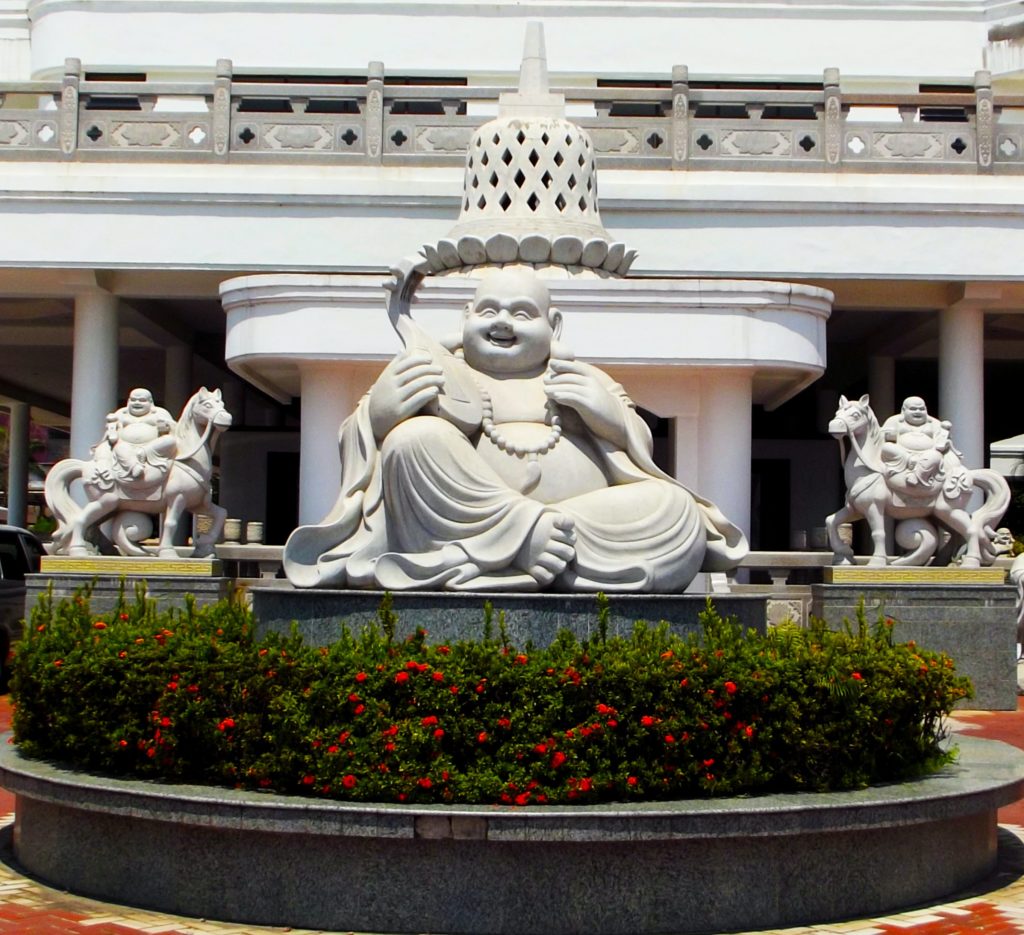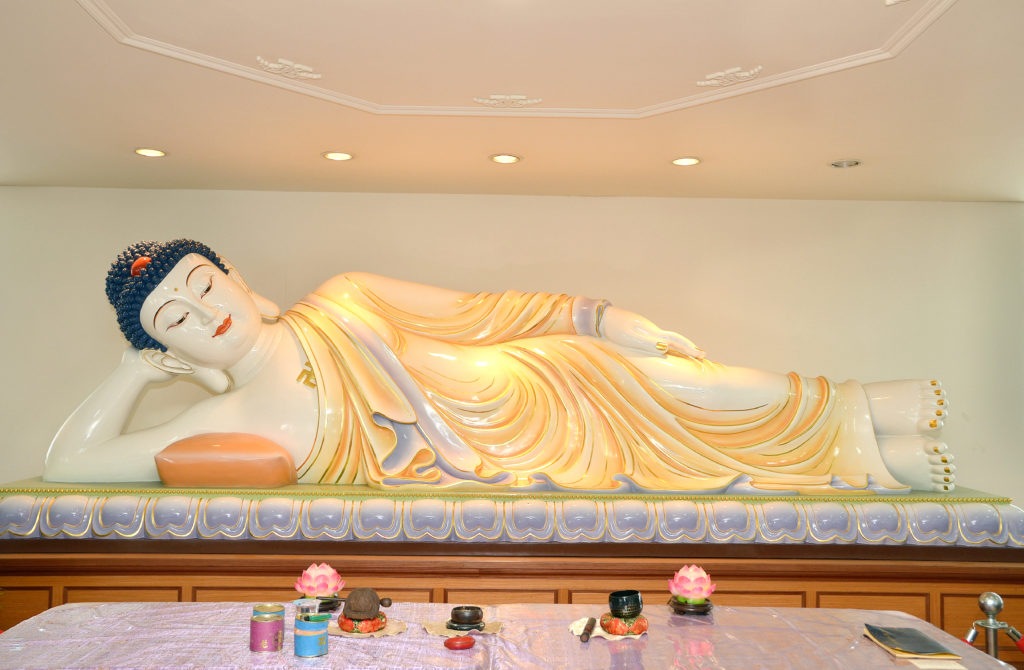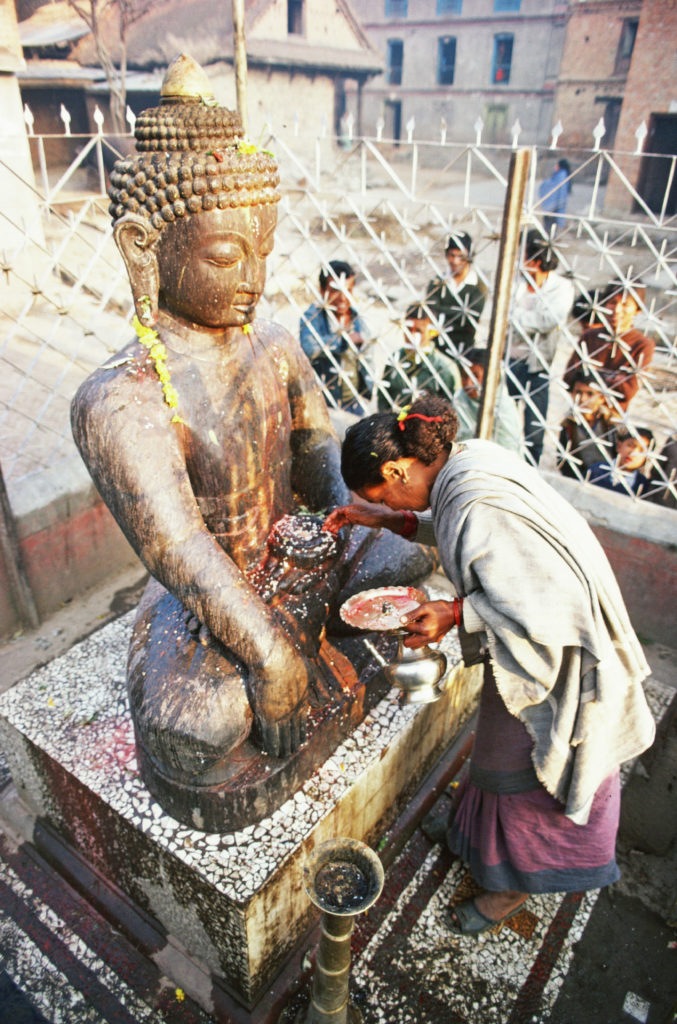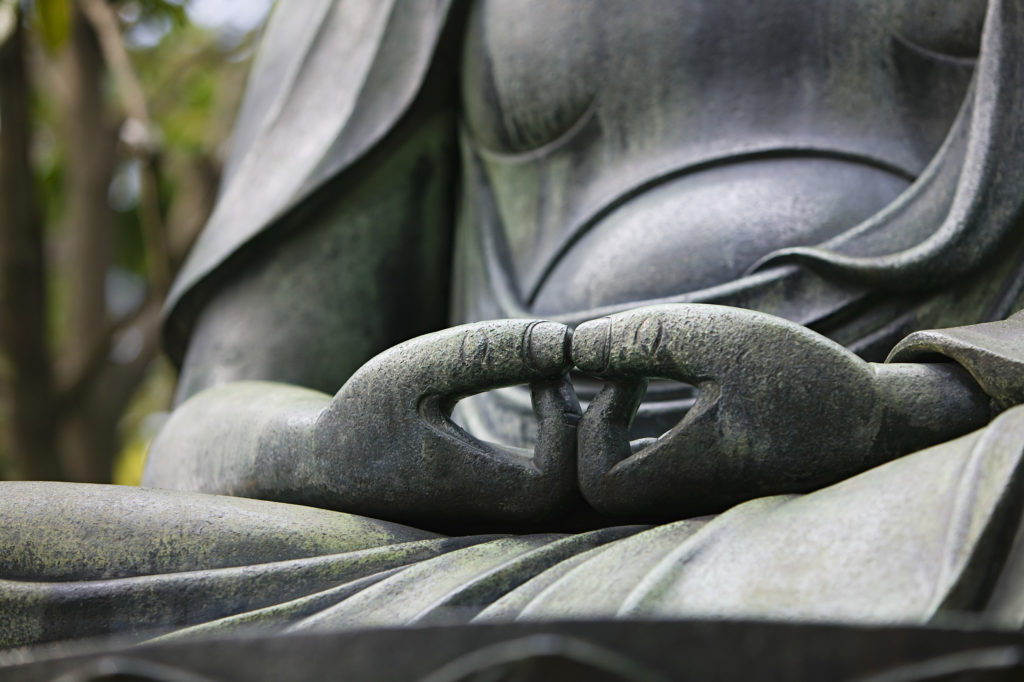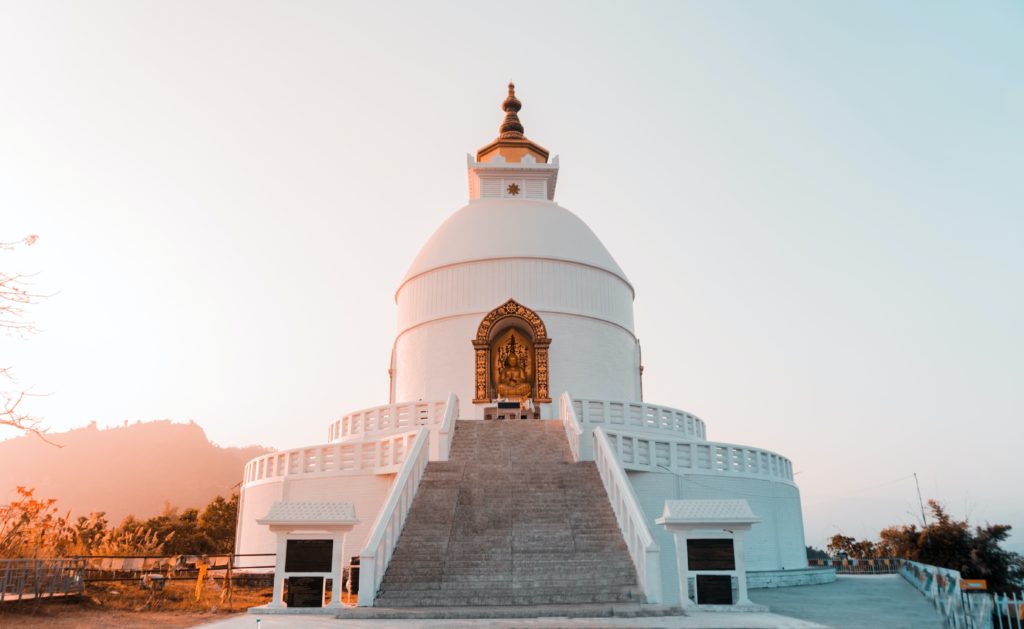Your cart is currently empty!
Author: admin
Dashain – The Biggest Festival of Nepal

Credit – Stunning Nepal Bada Dashain बडादशैँ also known as Bijaya Dashami is Nepal’s most intensely celebrated festival. It is celebrated by the Hindus and Kirats i.e. all caste and creed of Nepal. It is one of the most auspicious longest festivals each day celebrated to worship Nava Durga namely Brahmayani, Maheshwari, Indrayani, Barahi, Kumari, Bhadrakali, Tripurasundari, Mahalaxmi, and Mahakali. During this period, almost all Nepalese from around the globe returns to their hometown to celebrate this festival together with their friends and family. Every institution including the government offices, schools remains closed during this festival period. This festival falls in September and October period starting from the first day after the no-moon day Shukla Paksha (bright lunar fortnight) to Purnima (full moon). Here we have highlighted the most important days of Dashain and how it is celebrated.

Credit – Ayu Shakya 1. Ghatasthapana (First Day)
Ghatasthapana घटस्थापना is the 1st Day of the biggest festival of the Nepalese year – Dashain. It is also known as Kalashthapana /Sharadiya Navaratri शारदीय नवरात्रि. Nepalese Ghata means “Pot/Vessel” and Sthapana means “to establish” which means to establish a pot. In Bikram Sambat Calendar – the first day after the no-moon days (bright lunar fortnight) is celebrated as the Ghatasthapana.
Nepal is a multi-ethnic country with 4 different Castes and 36 Barnas. Every caste and religions celebrate Dashain in their own traditional way. On this holy day, almost all household cleanse their most sacred place – the puja room, and the whole house is cleaned to establish Ghata near the goddess Navadurga. The Ghata is clay or copper made pot – Kalash filled with holy water collected from nearby Navadurga temples – taps and river banks, holy grass (दूबो), flowers to cover the top, rice mixed with turmeric (Akshyata), beetle nuts, gems, or gold coin.

Credit – nepalsanctuarytreks Along with the holy water, sand is also collected to grow barley seeds into “Jamara” during the 10 days till Dashain. The sand is spread around the Kalash in the puja room and the seeds are spread at a certain favorable time of the day. The sand bed and pot is kept wet by holy water every morning till Dashami. Priests in temples and elders at home chants Chandi path prayers during this procedure to request goddess Durga to bless the Ghata with resting herself for the 10 days till Dashain. Ghata is offered flowers, food items, and colorful powders with a burning oil lamp burning every day during these 9 days of Devi Durga till Vijaya Dashami. On the tenth day, the grains grow about 3 inches or 5 inches which are then cut and given as Prasad to family members, friends, and neighbors as Jamara. It is put on the heads by the elders when blessings are given during the Vijaya Dashami.
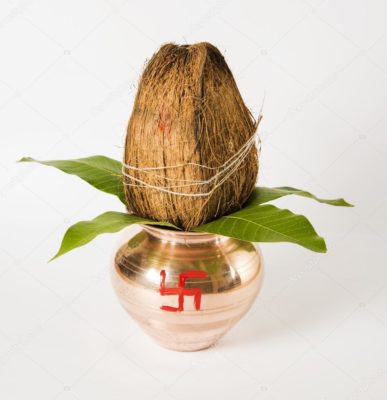
Kalash iMartNepal provides festivity goods, god and goddess statues (Murti), and other ingredients used during festivals like Dashain and Tihar. Whether you want to place sacred god/goddess statues in your puja room, or religious materials Puja Thali, Tika, or native attires like Dhaka Topi or Daura Suruwal to wear them during the celebration, we supply them all. Ping us in our Chatbox or Facebook to share your requirements with us – Contact us now.
Chandi Path (चण्डी पाठ)
“मम महामायाभगवती ( वा मायाधिपति भगवत ) प्रीतये ( आयुर्बलवित्तारोयसमादरादिप्राप्तये वा ) नवरात्रव्रतमहं करिष्ये।”
2. Fulpati (Seventh Day)
Bada Dashain celebrates Devi Durga – the ten mother goddess and her victory over the evil buffalo demon Mahishasura. The epic battle against Mahishasura ended with his death on Vijaya Dashami. The seventh day of Bada Dashain – Phulpati or Saptami is celebrated with auspicious flowers decorating homes as Dashain Ghar in every household in Nepal. In Kathmandu valley, a Ghata prepared with the Jamara, banana stalks, and sugar cane tied with red cloth is brought from Gurkha by the Brahmins to offer the Royals monarch. Hundreds of people with all the high-officials attend a special parade ceremony at the Tundikhel grounds to witness The Nepal Army, Nepal Police Force, and civil service, and all related officials march with a procession and cultural pageantry from Hanuman Dhoka.
Credit – Kantipur Television 3. Maha Ashtami (Eighth Day)
Maha Ashtami is also known as Durgasthami and is celebrated on Ashwayuja Shukla Asthami. On the 8th day of Bada Dashain – Maha Asthami, Durga Bhawani, Bhadrakali, and Maha Gauri – different incarnations of Navadurga is highly worshipped by sacrificing sacred animals. Ayudha and Astra mean weapons are also worshipped on this day. The night of Asthami is called “Kal Ratri” hundreds of goats, sheep, and buffaloes are sacrificed in Kali’s temples and households. In Kathmandu valley, the night is celebrated with feasts called “Kuchi Bhwe” means mana of beaten rice and a variety of compulsory dishes.
Asthami Mantra
श्वेते वृषे समारुढा श्वेताम्बरधरा शुचिः ।
महागौरी शुभं दघान्महादेवप्रमोददा ॥
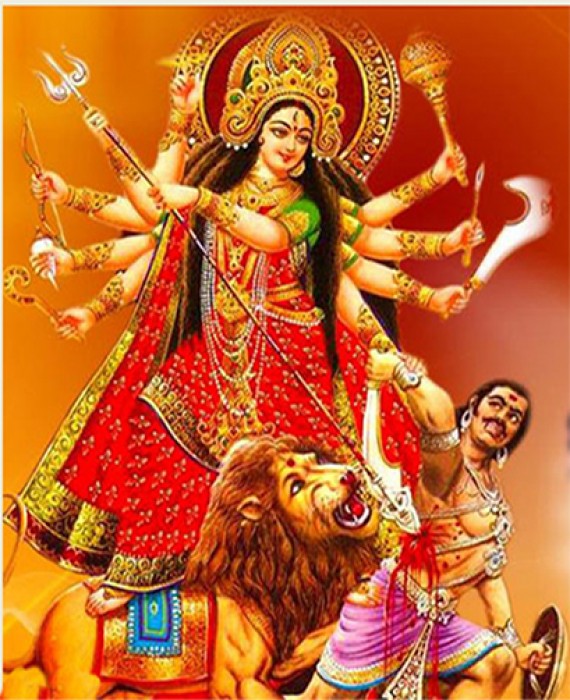
Credit – Peoples of Nepal 4. Maha Navami (Ninth Day)
The last of Nava Durga during Dashain is Maha Navami. It is the 9th day of Bada Dashami that ends Navratri. The day is specially celebrated as the day when Durga finally defeated the evil buffalo demon Mahisasura. To mark this victory, she is named Mahisasurmardini. In Kathmandu valley, people visit local Durga temples and then to the elders of the family to offer prayers for blessings and enjoy festive treats. Local craftsmen, traders, mechanics offer animal sacrifices to their tools, machines, vehicles, and equipment. There is a huge belief that worshipping them prevents accidents over the year. The office military sacrifices animals on the “Kot” courtyard of all three Durbar Squares – Kathmandu, Patan, and Bhaktapur. This is the only day when the door of the notorious Taleju Temple is opened for the public to worship the Goddess inside.
Credit – nileshstha 5. Vijaya Dashami (Tenth Day)
The infamous day Vijaya Dashami is the 10th day of Bada Dashain. Almost all Nepalese celebrate this day with great zeal and enthusiasm with their friends and family. People visit their elders for blessings and put Tika (rice grains mixed with crimson powder) and Jamara. An auspicious time set by great country priests for Tika in this day while this process goes on to 5 more days till the Purnima as family visits all their elder relatives.
Dashain is celebrated for the victory of truth over the evil, good over the bad. It reminds us that evil may be strong for time; the truth and good always prevails. It is also called Dashahra where Dasha means bad fortune and Hara means take away which simply means – “Take away ill fortune”.
Dashain Mantra
सर्व मंगल मांगल्ये शिवे सर्वार्थ साधिके । शरन्ये त्रयम्बिके गौरी नारायणी नमोस्तुते ।।
शरणागत दीनार्तपरित्राण परायणे। सर्वस्यातिहरे देवि नारायण नमोस्तुते।।
सर्वस्वरूपे सर्वेशे सर्वेशक्तिसमन्विते । भयेभ्यस्त्राहि नो देवि दुर्गे देवि नमोऽस्तु ते ।।
रोगनशेषानपहंसि तुष्टा। रुष्टा तु कामान् सकलानभीष्टान्।।
त्वामाश्रितानां न विपन्नराणां। त्वमाश्रिता हृयश्रयतां प्रयान्ति।।
सर्वाबाधा प्रशमनं त्रैलोक्यस्याखिलेश्वरि। एवमेव त्वया कार्यमस्मद्दैरिविनाशनम्।।
सर्वाबाधा विर्निर्मुक्तो धनधान्यसुतान्वित:। मनुष्यो मत्प्रसादेन भविष्यति न संशय:।।
जयन्ती मङ्गला काली भद्रकाली कपालिनी । दुर्गा शिवा क्षमा धात्री स्वाहा स्वधा नमोऽस्तु ते ।।
देहि सौभाग्यमारोग्यं देहि देवि परं सुखम् ।
रूपं देहि जयं देहि यशो देहि द्विषो जहि ॥
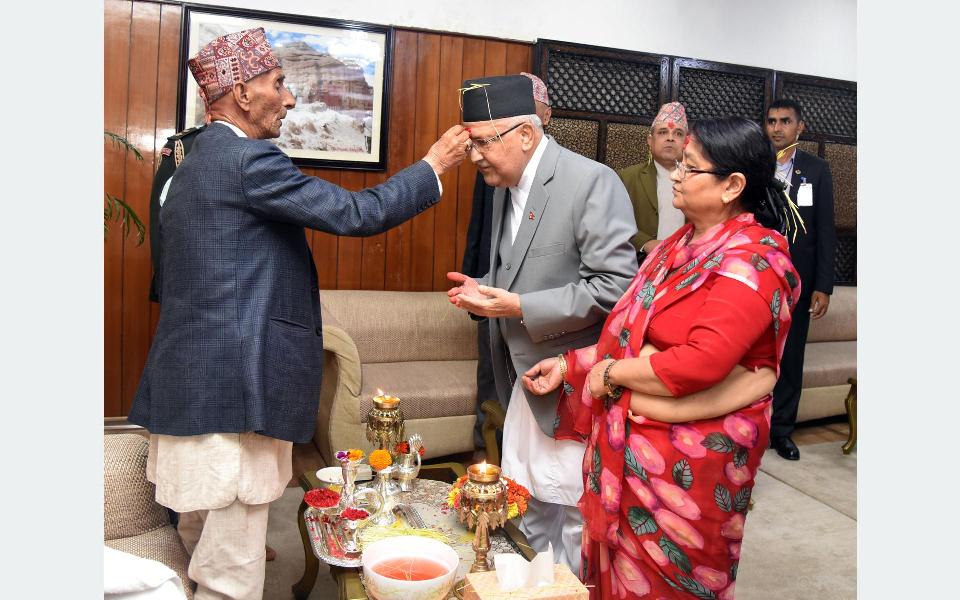
Credit – https://myrepublica. nagariknetwork.com/ iMartNepal provides festivity goods, god and goddess statues (Murti), and other ingredients used during festivals like Dashain and Tihar. Whether you want to place sacred god/goddess statues in your puja room, or religious materials Puja Thali, Tika, or native attires like Dhaka Topi or Daura Suruwal to wear them during the celebration, we supply them all. Ping us in our Chatbox or Facebook to share your requirements with us – Contact us now.
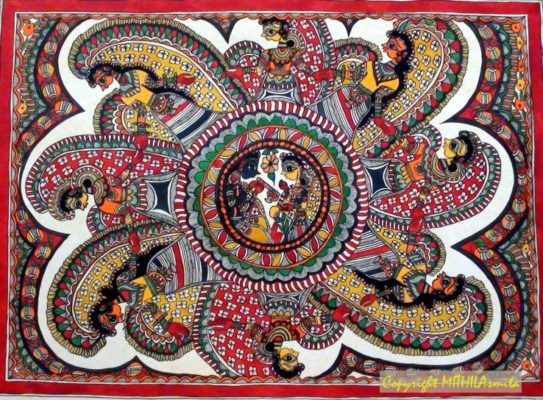
Art of Mithila: A Living Tradition
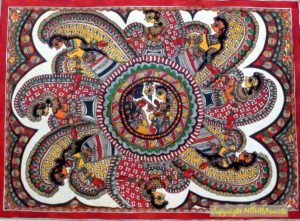
The dazzling Mithila artwork produced by Maithili women of Nepal can be traced back as far as the 7th century and has been passed from generation to generation since. Mithila painting also known as Madhubani art or painting in India is a traditionally designed painting created by the women of various communities in the Mithila region of Nepal and India. As the former capital of the kingdom of Mithila, Janakpur has emerged as the center for both preserving and promoting this ancient art.
Initially, the womenfolk of the village drew the paintings on the walls of their home, with fingers, twigs, brushes, and matchsticks as an illustration of their thoughts, hopes, and dreams. With the change in time and tradition, the paintings started becoming a part of festivities and special events, like marriage. Slowly and gradually, the Mithila painting starts developing on paper and canvas crossing the traditional boundaries and started reaching connoisseurs of art, both at the national as well as the international level.
Ancient History and Myths of Mithila Art

The representative form of Mithila art has its origin in the great Indian sub-continental epic Ramayana where it is believed King Janaka of Mithila hired local artists and decorated the town of Janakpur with this unique art form for the wedding of his daughter Sita to Rama.
“In the following we see that Mithila Art is wedded to the concept of democracy from a very early period, predating by millennia the emergence of modern democracy — this background and context has special significance for Mithila Art’s most internationally renowned characteristic: women’s empowerment, itself one of the fundamental strands of modern democracy and related egalitarian values as seen through gender equality.”
What’s so special about Mithila art?

KONICA MINOLTA DIGITAL CAMERA Traditionally, the painting was one of the skills that were passed down from generation to generation in the families of the Mithila Region, mainly by women. Different variants of Mithila paintings were done on walls coated with mud and cow dung, nevertheless, it never lacked precision in bringing to fore the symbolic representation, which effectively gives it its uniqueness.
When technically evaluating, Mithila paintings can be divided into five distinctive styles: Bharni, Kachni, Tantrik, Nepali, and Gobar. Until the 1960s, when Mithila paintings were not yet commercialized, Bharni, Kachni, and Tantrik style were mainly done by Brahman and Kayashth women, who are the upper caste women in Nepal and India.
Mithila paintings mostly portray the men, its association with nature and the scenes deity from the ancient epics. Natural objects like the sun, the moon, and religious plants like tulsi are also widely painted, along with scenes from the royal court and social events like weddings. Generally, no space is left empty; the gaps are filled by paintings of flowers, animals, birds, and even geometric designs. It is still practiced and kept alive in the institutions spread across the Mithila region.
Done in primary colors of natural origin on paper and cloth, the Mithila Art narrates mythological and religious events. The Painting is done with fingers, twigs, brushes, nib-pens, and matchsticks, using natural dyes, and pigments, and is characterized by eye-catching geometrical patterns.
Widely used Mithila images include deities such as Vishnu, Ganesh, Radha, Krishna, Sita, and Ram. There is ritual content for particular occasions, such as birth or marriage, and festivals, such as Holi, Surya Shasti, Kali Puja, Upanayana, Durga Puja.
Colors used in Mithila Art
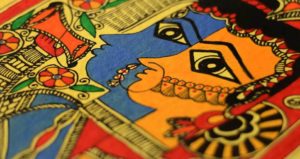
The women artists of Mithila use different local colors in their art. Generally, they use bright and brilliant colors which make their arts very pretty and at the same time very attractive. They use bright red, yellow and black colors. These three colors are frequently used which are very natural such as black is from soot, red from local clay and yellow from petals of flowers or turmeric.
They use indigenous colors in their art to make them attractive and lasting. They prepare vegetable colors from different flowers, fruits, barks, and root. The gum prepared naturally from the babul tree is mixed in the colors for durability. Black is generally obtained by lamp spot. It is easily dissolved in gum water. A light color is obtained by mixing cow-dung and gum in fresh water. The bark of the peepal tree is dried in the sunrise and then boiled in water until it yields a pink color. The blue color is obtained by crushing the berries of the wild herb. These colors are used to their imagination and vision. They also sometimes use watercolor mixed with rice powder (which is called pithar in local language) and vermillion (sindur in local language).
Mithila Art – Going places
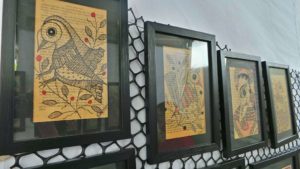
Bharati Dayal, an artist from India a keen practitioner of Madhubani painting, features divine forms and narratives in her works. She offers her creative repository to art enthusiasts through this elegantly produced book. This book showcases some of the best paintings of Bharati Dayal and re-confirms that she is an artist who has indeed played a significant role in the re-emergence and spread of this ethnic art form. Her paintings get completed in a diversely rich combination of graphic designs, tattoos, lines, concentric circles, motifs of flora and fauna, spirits and animistic renderings—exuding figurative intents.
Furthermore, the Maithils are Shakti (mother goddess) worshippers—and the schools of Tantric rituals have been flourishing in their surroundings, giving spiritual traction to an informal art form that soon became a living tradition.
One of the best-known social projects is the Janakpur Women’s Development Centre, just south of the city in the village of Kuwa. Around 40 Maithili women are employed at the center, producing paper paintings, paper-mache boxes and mirrors, screen-printed fabrics and hand-thrown ceramics. Money raised goes directly towards improving the lives of rural women.
It is worthwhile to recall the rich contribution of foreign scholars in promoting Mithila painting internationally. Yvesh Vequad, a French novelist and journalist, in the early 1970s wrote a seminal book on the subject The Art of Mithila: Ceremonial Paintings from an Ancient Kingdom—and produced a film, titled The Women Painters of Mithila.
The German anthropologist film-maker and social activist Erika Moser persuaded the impoverished Dusadh community to paint. The result was the Dusadh captured their oral history (such as the adventures of Raja Salhesh, and depictions of their primary deity, Rahu) — typified by bold compositions and figures based on traditional tattoo patterns called Goidna locally. This added another distinctive new style to the region’s flourishing art scene.
Stars of Madhubani Art
Madhubani painting received official recognition in 1975 when the President of India awarded the Padma Shri to Jagdamba Devi, of Jitwarpur village near Madhubani. This was just the beginning.
1) Sita Devi, one of the most prominent early Mithila artists and among the first to transfer the traditional art form from the walls of the home to paper and canvas. She received State award by Government of Bihar in 1969 and taught the art to her family members as well.
2) Vidhushini Prasad, a Bangalore based entrepreneur who kept alive the essence of this art and exhibited in many of the art galleries across India like Renaissance Art Gallery (Bangalore), David Hall Art Gallery, Fort Kochi, Eka Lifestyle, Bangalore, Genesis Art Gallerie. She has also showcased her work at Karnataka Chitrakala Parishath, Bengaluru. Her paintings have been a part of the listings on online portals like FineArtAmerica, and she has authored a book on Madhubani art as well.
Furthermore, Baua Devi, Yamuna Devi, Shanti Devi, Chano Devi, Bindeshwari Devi, Chandrakala Devi, Shashikala Devi, Leela Devi, Godavari Dutta, Bharti Dayal, Chandrabhushan, Ambika Devi, Manisha Jha were also given National Awards.
Among those Indian scholars, who contributed to the stream of Mithila Painting, are Mulkraj Anand (a book on Madhubani painting), Devaki Jain (numbers of papers on Mithila art), and Jyotindra Jain (a fine book on the legendary artist, Ganga Devi); they traveled across the hinterlands of Mithila to comprehend the artistic genesis and the issues on the ground.
List of books on this form of art, to guide you into the roots to the top of the tree:
1) Brown, Carolyn Henning, Contested Meanings: Tantra and the Poetics of Mithila Art
2) Brown, Carolyn Henning, “The Women Painters of Mithila”
3) Archer, William G., Songs for the Bride: Wedding Rites of Rural India
4) Craven, Roy C., A Concise History of Indian Art
Mithila art beyond paintings
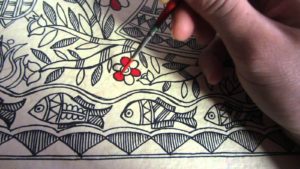
Today, when Mithila painting as an art form is creating livelihood opportunities across the border of India and Nepal, it becomes more imperative than ever to unleash its true potential. Mithila art piques interest in art lovers from different countries like USA, Australia, UK, and Russia.
Patterns from this art form have also found their way onto various items like bags, cushion covers, coasters, mugs, crockery, and mouse pads. More to this it remains ever-popular on the home decor front in the form of prints for table linens, napkin rings, and lamps and most importantly on wall hangings. Mostly because Mithila art was originally used for decorating walls and floors of homes.
The further scope of its exploration is immense, and as it is globally recognized now, its expansion in the course of time will make the women of Mithila drawn towards art entrepreneurship. Much is being done in this regard in Janakpur in Nepal and in Madhubani in India, to prepare for the next round of commercialisation.
[woo-related id=’13004′ show-title=’no’]
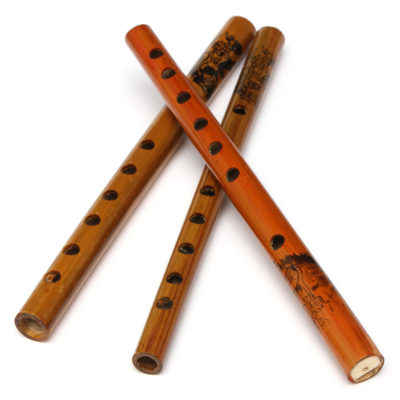
Bansuri: The Best Nepali Musical Instrument
The word bansuri originates in the Sanskrit: “bans” which simply mean bamboo and “Sur” which means musical note. The pitch and sound of the Bansuri depend on the length and thickness of the bamboo used. The bansuri is depicted in ancient Buddhist, Hindu, and Jain temple paintings and reliefs, as well as is common in the iconography of the Hindu god Krishna. It is intimately linked to the love story of Krishna and Radha. Bansuri is a very sensitive instrument; almost all the delicate graces, curves, embellishments and shades of classical music can be performed to perfection upon it.
Being a portable instrument, it can be carried easily from place to place and climatic changes have very little or no effect on the seasoned bamboo. The bamboo chosen to make the flute must be selected very carefully. It should be neither too old nor too young a plant, of medium thickness, and the stem should be clean and smooth, free from cracks, bumps, holes or other damages.
The harvested bamboo with a desired diameter is cut, dried and treated with natural oils and resins to strengthen it.The bamboo tube is best dried in the shade for approximately one year. Once ready, the artisans examine the smoothness, straightness, and measure the dried hollow tube.
They mark the exact positions for hole, then use hot metal rod skewers of different diameters to burn in the holes. Drilling and other methods of hole making is avoided as it is believed to damage the fiber orientation and the splits affects the music quality. The burnt in holes are then finished by sanding, one end plugged, the flute ringed at various positions to stabilize its form and shape over time, the unit tested for their musical performance.
The length of the Bansuri is normally between two-and-a-half feet to less than three feet, depending upon the thickness of the wall and the density of the bamboo. Long bansuris or flutes have a rich, deep and mellow tone whereas in small bansuris or flutes the tone is high pitched.
While playing, the Bansuri, it is placed horizontally, a little tilted towards the ground. And by controlling the breath, different sound modulations are achieved. With the help of the tongue and throat, the air is stroked and the different sound is produced. More to this, the player has to figure out his own angle from where the instrument is best suited to him to give him the best tone.
Nepali Bamboo Bansuri
Is not this amazing, how a small piece of bamboo, with lots of holes on it, can produce music so divine and peaceful?
By blowing the flute and by moving the fingers you control not only the sound of the instrument but also the tones and pitches. The thumbs hold the bansuri in position. In Nepali folk music, these flutes are often gladly used because they allow better control of sound and tonal variety.
The bansuris are originally tuned to the “divine tone” A = 432 Hz. Therefore, all tones of the instrument sound a little lower compared to the concert pitch A = 440 Hz. This somewhat lower tuning is sometimes described as the “better frequency”.
To some people’s ears, instruments tuned to 432 Hz sound more relaxed, peaceful and centered. This perception also corresponds to number cosmological contexts.
The holes of the Bansuri are covered with the pads of the fingers and not the fingertips. Also, note the thumb position which is very essential to support the Bansuri while playing notes in quick succession.
While start playing the bansuri the first mistake the people face is impatience. After you start producing sound from your Bansuri, they quickly want to start playing. They will not wait to notice that the key to playing the Bansuri is not the ability to produce sound but, the ability to produce the perfect sound. Even if you can produce good sound, stick with it, and go on practicing it.
How to know when the produced sound is perfect
1) You stop producing the hissing sound while blowing.
2) You can prolong that sound for a longer duration with the same intensity.
3) Clarity of your sound. It should be crystal.
Significance of Lord Krishna Bansuri
Bansuri is the oldest musical instrument known to mankind. The flute has been mentioned in the Puranas which were written thousands of years ago.
Bamboo flute is the only musical instrument which is most natural and does not contain any mechanical parts. This is the reason the flute is very close to Nature and sounds very melodious when played in an atmosphere surrounded by Nature. Lord Krishna holding a flute has deepest of deeper meaning it simply symbolizes to wipe out tension and all kind of negativity for peace & balance life.
Therefore, everyone is attracted towards the melodious sound of flute, which is Lord Krishna’s favorite instrument.
How is a bansuri different from the western classical flute?
The simplest difference is that a bansuri is on the diatonic scale whereas the classical Western flute is on the chromatic scale. In layman’s terms, you can only get the seven notes of a given scale in a bansuri (if you are not playing the half notes of course) whereas there is a clean and defined way of getting every possible note of the chromatic scale in a western flute.
Bansuri is also chromatic. It’s just that western flute has keys which need to be adjusted to play all 12 notes whereas in bansuri you have to adjust your finger positioning for same 12 notes.
The difference is in the sound of both instruments. Bansuri even with its highest scale has a more husky sound than exactly same notes of a western flute. If you understand music than you can hear the difference in Chinese flute, dizi, flute, western flute, and bansuri
The main pros of the western flute are that it has a wider range of around 3 octaves. While bansuri has around 2 and a half. There are cross fingering techniques that can extend it to 3 octaves but it is rarely used.
The main pros of bansuri are its maintenance. Western flute needs regular tuning and maintenance. While bansuri is just a bamboo with holes.
Visit our Bansuri section under Nepali Musical Instrument product list to buy different kinds of Nepali Bansuri at reasonable price. We have 10% discount offer to all our new costumers and free worldwide shipping for bulk orders above 75$.
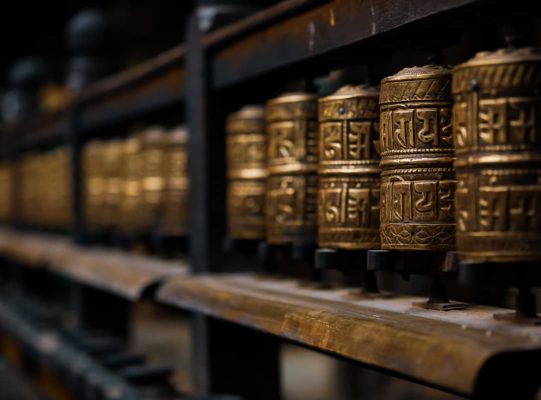
Buddhist Prayer Wheels: Meaning & Uses
A Buddhist prayer wheel is generally a hollow cylindrical wheel made from metal, wood, or stone, often beautifully embossed, mounted on a rod handle or axis made of wood or a precious metal. Simply, it is an inseparable part of the Tibetan and Buddhist tradition. Prayer wheels are known as Mani wheels in the Tibetan language. The Buddhist prayer wheels are used as an aid to meditation and as a means of accumulating wisdom, good karma, and means of putting bad karmas and negative energy aside.
The inner portion of the hollow cylinder contains a tightly scrolled paper or other material full of printed or handwritten mantra. According to the Tibetan Buddhist tradition based on the lineage texts regarding prayer wheels, spinning such a wheel will have much the same meritorious effect as orally reciting the prayers.
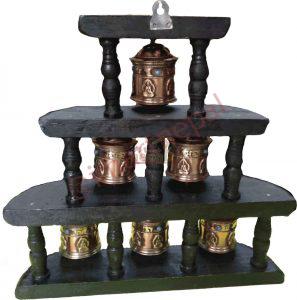
Traditionally, the mantra Om Mani Padme Hum are inscriptions in Sanskrit (or sometimes Tibetan) script and auspicious Buddhist symbols, on the outside of the wheel. Also sometimes depicted are Dakinis, Protectors and very often the 8 auspicious symbols Ashtamangala. This outer part is removable to allow for the insertion of the sacred text into the cylinder. At the core of the cylinder is a “Life Tree” often made of wood or metal with certain mantras written on or wrapped around it. Many thousands (or in the case of larger prayer wheels, millions) of mantras are then wrapped around this life tree. Yak grease is used on the handle to make them spin more quietly.
It is believed that each turn of a prayer wheel represents a recitation of the prayer inside and transports it to heaven.
Varying in size from thimbles to oil drums, with some the size of buildings, prayer wheels can be made of wood, copper, bronze, silver or gold. Pilgrimage paths (koras) are often lined with a prayer wheel. Pilgrims spin the wheels to earn merit and help them focus on the prayers they are reciting. According to Tibetan Buddhist belief, spinning a prayer wheel is just as effective as reciting the sacred texts aloud.
Benefits of Prayer Wheels
Prayer wheels come in many sizes: they may be small and attached to a stick, and spun around by hand; medium-sized and set up at monasteries or temples, or very large and continuously spun by a water mill. But small hand-held wheels are the most common by far.
Just touching and turning a prayer wheel brings incredible purification and accumulates unbelievable merit. It is believed that the more prayers one offers, the more merit he or she earns, which improves his or her chances or receiving a higher reincarnation and eventually achieving nirvana.

Turning or spinning the Buddhist prayer wheels is considered so powerful that, it is compared with the power of one hundred monks praying for the whole life.
- One of the benefits of the prayer wheel is that it embodies all the actions of the Buddhas and bodhisattvas of the 10 directions. To benefit sentient beings, the buddhas and bodhisattvas manifest in the prayer wheel to purify all our negative karmas and obscurations, and to cause us to actualize the realizations of the path to enlightenment.
- It is believed that the prayer through the Buddhist prayer wheels grant everything a worshipper asks for.
- There is a heavy belief that turning the Buddhist prayer wheels with remorse and guilt will help you eliminate the four bad deeds, the five actions of immediate retribution, the eight of the wrong views and finally the ten non-virtues.
- Any person who turns the Buddhist prayer wheels in his life shall never again born with any anomalies in his/her life, never born with disorders like blindness, deafness, muteness or as a cripple.
Types of Prayer Wheels
Buddhist prayer wheels range highly in size and styles. From a simple hand-held prayer wheel and table top prayer wheel to an enormous size of eight to twelve feet tall and with a diameter of five to six feet. It is not only the size or magnitude of a prayer wheel that defines its types. There are many types of Buddhist/Tibetan prayer wheels:
- Mani wheel (a hand prayer wheel)
- Water wheels (turned by flowing water)
- Fire wheel (turned by the heat of a candle or electric light)
- Wind wheel ( a type of prayer wheel is turned by wind)
- Stationary prayer wheels
- Electric dharma wheels(powered by electric motors)
Rotating these prayer wheels and reciting is considered one of the most thoughtful and beneficial act. Most often build in the periphery of stupas and monasteries, a number of Buddhist prayer wheels might range from a few to hundreds for people to spin them as they walk past or when they rotate around the temple or stupa in a clockwise direction.
A fine example of huge numbers of prayer wheels in one place can be the famous Soyambhunath stupa, where numerous Buddhist prayer wheels are installed around the huge stupa of Soyambhunath. The mantra to recite while one is turning the Buddhist prayer wheels is: “OM MANI PADME HUM” or “OM MANI PEME HUNG”.
Six Syllabuses and what each syllabus means
Though the mantra is interpreted in various ways depending upon different Buddhist philosophy school, here is the explanation of the mantra by Tsangsar Tulku Rinpoche. The manta has six syllabuses and each syllabus means something and represents something.
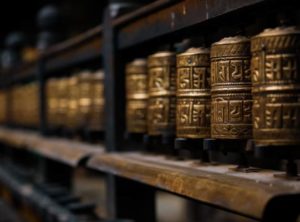
The six syllabi of the mantra that is written inside the scroll of a Buddhist prayer wheel are:
1. OM
It is a spiritual Sanskrit sound of Hindu foundation, holy and significant in a variety of Dharmic religions such as Hinduism, Buddhism, and Jainism. In the mantra OM MANI PADME HUM, it represents Generosity, purifies Pride / Ego and itself is represented by the color white with a symbol of Deity- Wisdom.
2. MA
It represents Ethics, purifies Jealousy / Lust for entertainment and itself is represented by color Green with a symbol of Deity- Compassion.
3. NI
It simply represents Patience, purifies Passion/desire and itself is represented by color Yellow with a symbol of Deity- Body, speech, mind quality and activity.
4. PAD
It represents Diligence, purifies Ignorance/prejudice and itself is represented by color Blue with a symbol of Deity- Equanimity.
5. ME
It represents Renunciation, purifies Poverty/possessiveness and itself is represented by color Red with the symbol of Deity- Bliss.
6. HUM
It represents Wisdom, purifies Aggression/hatred and itself is represented by color Black with a symbol of Quality of Compassion.
The prayer wheels are an extremely powerful tool for praying. Amitabha Buddha has said, “Anyone who recites the six syllables while turning the dharma wheel at the same time is equal in fortune to the Thousand Buddhas.” It accumulates the merit and helps to purify the obstacles of life.
The Buddhist people carry them around for hours, and even on long pilgrimages, spinning them any time they have a hand free. Prayer wheels at monasteries and temples are located at the gates of the property, and devotees spin the wheels before passing through the gates.
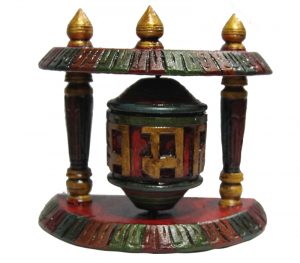
When to Use a Prayer Wheel
There is no any exact definition when it comes to when to use the prayer wheels still, one can turn the prayer wheel anytime during his/her daily meditation or mantra recitals or during when some spiritual practices are performed. The prayer wheel can also be spun while circumambulating a stupa and even when you are watching TV, listening to music or reading books along with all of your other daily works. But the Buddhist prayer shouldn’t be spun while a Lama is delivering a speech or while he is teaching.
How to Use a Prayer Wheel
The prayer wheel should be turned clockwise with a single-pointed concentration of body, speech, and mind. It is easy and fast to turn the prayer wheel and it does not require great physical strength or many repetitions. The activity is easy to do, the meaning and or purpose is great, and the benefit is great. Turning the Buddhist prayer wheels does not require much physical strength and many repetitions.
We offer different quality of best Buddhist Prayer Wheels with or without carving, small & large size prayer wheel, please email us if you are looking to buy Buddhist Prayer Wheels.
Conclusion
Prayer wheels are an important part of many Buddhist’s practices because they allow for a simple and elegant way of taking mantra repetition to a new level. We believe spinning the wheel, gives the practitioner a way to break mental restlessness. Check out our prayer wheel!
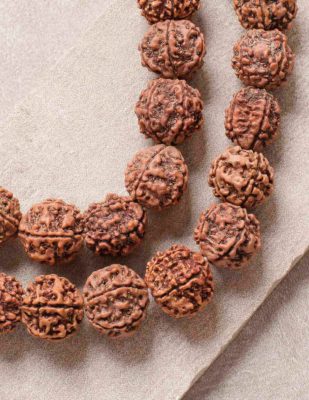
Rudraksha – Things You Need to Know About Rudraksha
Rudraksha is a seed traditionally used as prayer beads in Hinduism. It is associated with the Hindu deity Lord Shiva and is commonly worn for protection and chanting Om Namah Shivaya mantra by devotees. Rudraksha Mala is a string of beads used mostly for meditation purposes. Some people wear Rudraksha Mala to balance their energies and to cure certain diseases.
Rudra is one of Lord Shiva’s Vedic names and Akṣa means ‘teardrops’. So it also means Lord Rudra’s (Lord Shiva’s) teardrops. There are other sources like Satguru Sivaya Subramuniyaswami and Kamal Narayan Seetha who describes Akṣa as an eye. So the meaning of Rudraksha could also constitute as “Eye of Lord Shiva” or “Eye of Rudra”.
The seeds are primarily used in Nepal and India as beads for organic jewelry or malas and are valued similarly to semi-precious stones. From One Mukhi to 21 Mukhi beads, a Rudraksha Mala is available in different combinations. And various meanings and potencies are attributed to beads with different numbers of segments (faces/mukh) and rare or unique beads are highly prized and valuable.
Importance of Rudraksha Mala
Found in Ancient Indian Scriptures and texts: From ancient times, the power of Holy Rudraksha beads have been scripted in various religious texts. It is said that Rudraksha Mala brings peace, tranquillity, and calmness to the person wearing it. Spiritual bliss and material gains can be assured by wearing Rudraksha Mala. That is why we have listed some of the benefits of Rudraksha.
- For people constantly on the move, Rudraksha Mala creates a cocoon on their own energy helping the wearer sleep easily and make other adjustments smoothly.
- It is believed that chanting just one mantra diligently can do such tremendous things to anyone life.
- As it is known for their mystic healing properties that can help cure various physical as well as emotional disorders. It helps in making a person mentally stable and is extremely beneficial in the treatment of neurotic diseases.
- Rudraksha Mala is beneficial in treating many diseases of the nervous, digestive, and cardiac system, as well as eye problems, get cured as well.
- Rudraksha Mala saves people from sudden debts and losses, saving the wearer from utter penury.
- Rudraksha Mala protects the wearer from negative energies like ghosts, evil spirits and other such malefic components of our world.
- A Rudraksha is also very supportive for this involved in certain practices like the chanting of a mantra etc.
Things to do after buying Rudraksha Mala
First of all, buy an authenticate Rudraaksh mala, make sure all beads are tied properly, not too tight and mala has Sumeru bead (Bindu/Starting bead) and total bead must be 109 (Including Sumeru bead).
After buying Rudraaksh mala do some rituals that are called conditioning of Rudraaksh:- Wash it with clean fresh water.
- Clean and dry with clean cloth.
- Dip mala in ghee for 24 hours
- Then after cleaning it and dip in cow milk for another 24 hours.
- Finally, wear it in the morning after Puja chanting any Shiv Mantra.
Note: In case of no availability of Cow Milk and Cow Ghee, use oil. Please make sure the bowl in which you soak mala should not be made of any metal i.e. Use Glass or plastic bowl. Before wearing touch the mala on the forehead.
Some do and don’t while wearing a Rudraksha Mala
There are some do’s and don’ts after wearing mala that must be followed to get the maximum benefit of Rudraaksh mala.
Some do after wearing Rudraaksh Mala
- In case you accidentally touch the Rudraaksh with other metal (like gold, silver), just remove the mala and do conditioning again and wear.
- Do conditioning every six months after wearing.
- Panchmukhi Rudraaksh can be worn by anyone above 14+ age.
Don’t after wearing Rudraksha Mala
- Don’t eat non-veg food.
- Don’t drink alcohol.
- You can wear mala all time including sleep, defecate but make sure it doesn’t get touch with metal. Not even a gold chain and all. Wear either mala or any other chain. Because Rudraaksh has an energy that may conflict with metal.
- Remove mala before going through any funeral process and child birthplaces.
- Don’t lend your mala to anyone.
- Don’t show off your mala.
- If any bead breaks then replace it with a new one.
- Don’t mix different types of Rudraaksh in a mala.
- Don’t touch mala, again and again, it’s not a fidget spinner, stop playing with it.
- Make sure you don’t wear Ekmukhi mala, it’s very powerful and rare too.
About Rudraksha trees
Rudraksha Tree (Elaeocarpus ganitrus roxb) grows 60-80 feet and is found from the Gangetic plain in the foothills of the Himalayas to Southeast Asia, Nepal, India, Indonesia, New Guinea to Australia, Guam, Hawaii, China, Taiwan, parts of Malaysia and Java (Indonesia).
Rudraksha seeds are covered by an outer husk of the blue when fully ripe, and for this reason, are also known as blueberry beads. The blue color is not derived from pigment but is structural. It is an evergreen tree that grows quickly. The Rudraksha tree starts bearing fruit in three to four years from germination. As the tree matures, the roots form buttresses, rising up near the trunk and radiating out along the surface of the ground.
Do all the Rudraksha have the same power?
Every Rudraksha has unique properties and different power from other beads. Each has different deities residing in it depending upon the faces of the Bead. If the Rudraksha acquired is a Genuine Bead of good quality and it is properly sanctified and energized with the ancient technique of rigorous Mantra recitation and Hawan. It must be then safely reached to the person who intends to wear himself. The power is to be then maintained by the person himself following regular chanting of Rudraksha Mantra and practicing regular Hawan.
Can anyone wear rudraksha mala?
Normally there are no restrictions, anyone can wear a Rudraksha regardless of their gender, age, nationality, and caste. However, considering the many types, beads and different origins of Rudraksha beads, it becomes imperative to seek some qualified guidance. More to this, the Rudraksha should not be cracked and broken it is important to take care of your Rudrakshas.
In order to achieve the best results, it is bests to wear the Rudraksha in the manner prescribed in the ancient texts like the holy Shiva Purana, Shrimad Devi Bhagwatam, etc.
Can ladies wear Rudraksha?
Rudraksha can be worn by everybody. The scriptures clearly state that there is no restriction on Rudraksha based on caste, creed, and gender. Rudraksha exists from 1 Mukhi to 21 Mukhi Rudraksha each is blessed by a deity from the Hindu pantheon. The 7 Mukhi is blessed to Goddess Lakshmi, the 9 Mukhi is assigned to Goddess Durga and the 18 Mukhi is assigned to Bhumi Devi. Further, the 2 Mukhi and Gauri Shankar show Shiva and Shakti in harmony. Based on this and scriptures it is safe to conclude that women can wear the Rudraksha.
What is Mukhi or Multifaceted Rudraksha?
As per details found in the Purana, there are fourteen kinds of Rudraksha, which are called Mukhi or faceted Rudraksha. Mukhi or faces of Rudraksha are deep lines found on the surface of the Rudraksha from bottom to the top hole. The number of these lines decides about the type or Mukhi Rudraksha. For example, if a Rudraksha has three such lines it is called 3 Mukhi or 3 faces Rudraksha. Other handwritten Scriptures found with various saints narrate the properties of 1 to 21 Mukhi Rudraksha. It is believed that these beads were available in the ancient time from 1 to 108 Mukhi. Now they have become a rarest Natural thing.
Selecting a Rudraksha
Rudraksha in their natural state has their own energies that are very beneficial to the wearer. However, Rudraksha can also be specially consecrated to enhance the impact upon the wearer. Assisting the seeker in many ways, they are potent aids for one’s physical, mental wellbeing and one’s spiritual sadhana (spiritual practice).
The following is a list of Rudraksha, which has been selected for use by the common man, with the corresponding attributable properties:
Dwimukhi: These are two-faced Rudraksha intended for married persons. It is supportive for marital relationships and should be worn by both husband and wife.
Panchmukhi: These are five-faced Rudraksha which can be worn by anyone above 14 years of age. It helps cultivate inner freedom and purity.
Shanmukhi: These are six-faced Rudraksha intended for children below 14 years of age. This Rudraksha aids in proper physical and mental development and draws qualities of motherly love toward the child.
Gowrishankar: These are beads which look like two beads fused together and can be worn by anyone above 14 years of age. It aids in prosperity and balancing the Ida and Pingala Nadis (energy channels) and activates the seven chakras.
Why does rudraksha have 108 beads?
A healthy person breathes 21,600 times a day. As per Shastras, out of 21,600 breaths, if a person gives half of these breaths to worldly activities then he should give at least half of it, i.e. 10,800 breaths to spiritual practice. But the same is not easily possible. Therefore, if we can remember the almighty in the one-hundredth part of 10,800 breaths, with devotion and fervor, they are hundred-fold strong. On this basis, the Rudraksha mala has 108 beads.
[product_embedder_blogs product_id=”1343″]
[product_embedder_blogs product_id=”1288″]
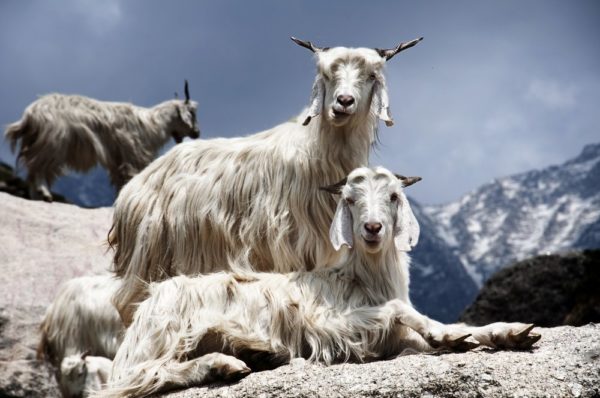
This Week’s Top Story: Nepali Pashmina or Cashmere
The softest, highly delicate and fluffy pashmina is considered to be the unique piece of fabric that has been supplied by the dexterity of Nepalese. Nepali Pashmina is a form of handicraft which can be regarded as a high quality handmade woolen product with multipurpose usage. It is characterized by an incredibly soft finish, which is a result of delicate fibers that are almost silky to the touch. Basically, the warmth and the qualities are the main factors on which the pashmina is judged. But not all Pashmina is equally luxe: The texture, color, and length of the fibers all affect manufacturing and pricing.
Pashmina products have found to be the third largest overseas export in the country along with readymade garment and hand knitted woolen carpet. In ancient times “Pashmina” was found in unblended form but these days it can also be found with the combination of silk, cotton and many more. In the long run with the varied experience and Pashmina yarn and silk yarn were combined. This result to produce better durability, fiber-strength, color-pleasantness, and well-finishing touch which become most prevalent all over the world and recognized as “Nepalese Pashmina”.
Pashmina came to be known as ‘cashmere’ in the West because Europeans first encountered this fabric in Kashmir. Being the finest natural insulating fiber it is also recognized as the Diamond fiber. For thousands of years, Cashmere or Pashmina shawls have been manufactured in Nepal. The pashmina’s history was allied with ancient civilization. During those days it was considered as the Fibre for Royals & Emperors only. People living in the high Himalayas discovered the essence and wonder of Pashmina.
What animal is pashmina wool from?
Pashmina is the fiber made up with the extract from the Himalayan goat also recognize as Chyangra which live in the Himalayan belt at the altitude above 14,000 feet above sea level. This unique coat of hair is about 1/6 of the diameter of any other types of hair.
The wool comes from four distinct breeds of the Cashmere goat; namely the Changthangi or Kashmir Pashmina goat from the Changthang Plateau in Kashmir region, the Malra from Kargil area in Kashmir region, the Chegu from Himachal Pradesh in northern India, and Chyangara or Nepalese Pashmina goat from Nepal.
Quality of the Pashmina also depends on the region in which the wool is collected. Up in the Himalayas, goats grow very fine hair to keep them warm during the colder Winters, so this fine hair is much better for producing super soft Pashmina. In Inner Mongolia, for instance, the winters are harsh and the goats have a more meager diet, which produces the finer hair seen in the highest quality garments.
Types of Pashmina
Types of Pasmina vary a huge amount, and it all depends on the environmental factors around the animal it comes from. Under the latest technicalities with new experiments and proper market, this product can be found in more and more sophisticated form providing the new prospect for this Pashmina handicraft Industry.
Furthermore, the most luxurious Pashmina wool comes from the area, where the yarn is noted for its long, smooth straight fibers. As well as the thickness of the hairs, the length of the hair makes a difference in Pashmina quality. The longer each hair, the better the fabric will be in terms of pilling and achieving the fluffy quality that we love so much.
Difference between Pashmina and Cashmere
People often get confused between Cashmere scarf and Pashmina scarf, Cashmere shawl, and Pashmina shawl while there is very little difference.
Cashmere is the westernized word originated from the Kashmir region of India and Pashmina is the local name came from “Pashm” a Persian word which means wool made from a special breed of Persian goats. Traditionally, Pashmina was lighter and softer than Cashmere which is why it was predominantly used for making shawls and scarves.
Why Pashmina is much more expensive than other kinds of wool?
Its costly production process and scarcity. As mention above it comes from the soft undercoat of goats bred to produce the wool. More to this, it takes the entire annual growth of three of these goats to make just one pashmina shawl.
The fibers of the warming undercoat must be separated from a coarser protective top coat during the spring molting season, a labor-intensive process that typically involves combing and sorting the hair by hand. Plus, the fineness of a Pashmina item comes down to that process, as the spinning and weaving of the fabric affects the look, feel, and the touch of the final product. These factors contribute to the relatively low global production rate of cashmere.
Can Pashmina be blended with other high-quality fibers?
Yes, it can be blended with other high-quality fibers. Pasmina is found to be the most durable and cozy fiber suitable for human skin providing warmth and comfort. It can be blended with conventional sheep’s wool to make a yarn that is more affordable, or with merino wool or silk to create a truly unique and special yarn.
How to tell if your Pashmina is high quality
With proper care, Pashminas can be used lifelong and we have encountered that this has been hand over from generation to generation even in Royal and wealthy families.
Normally, the higher the percentage of Cashmere in a garment, the higher quality that the product will be. Since it can be blended easily with other high-quality fibers then how to know whether the pashmina you are wearing is high quality or not!
The first thing to check whether you’re getting the good stuff or not is by looking for a tightly knitted product. A tighter knit is generally indicative of two-ply yarn. This means two pieces of yarn were twisted together in the manufacturing of the product, which means a stronger and warmer garment which will last much longer.
It’s also important to look out for bright colors – brighter hues mean the Pashmina was very clean to start with and that the dying process was first-class. Touch the product to see if it is soft and light and place it on your neck to test if it is itchy or not.
Often Cashmere is spun with silk to retain its luxurious silky soft quality, without being prone to excess pilling (those small bobbles which form on the fabric’s surface) which can happen with 100% Cashmere garments.
What distinguishes Pashmina clothing?
Material made of high-quality pashmina is wonderfully soft and very lightweight. In addition, pashmina has extraordinary thermal properties, retaining heat much longer than most other materials and for this reason, it is especially well suited for luxurious winter fashion. But during the warmer months, you don’t have to give up the alluring comfort of cashmere, because it can also be processed into a delicate summer yarn.
[woo-related id=’1705′]
How to take care of pashmina?
It is very important to note a few things about proper care and cleaning of Pashmina. A gentle handwash in cold water followed by drying flat will help your garment to retain its shape. It is best to use a special detergent designed exclusively for Pashmina. So that cashmere wool can retain its pleasant feel and outstanding properties
After extended wear, pilling can occasionally occur. In this case, some of the fibers have become knotted, causing small balls of fluff to appear on the surface of the material. But with the help of a wool razor, your favorite piece will look just like new again.
Conclusion
Pashmina is versatile and can be adorned on various occasions. In winters, regardless of how boring your outfit is a Pashmina scarf is a staple fashion accessory for every look you create. The best part of these natural fibers is that it can be used for much more than just warmth. And when it comes to styling with a Pashmina scarf, nothing can beat the versatility of this fabric.

Popular Nepali Musical Instruments
Music is unavoidable in Nepali culture. Either listening to the song, humming the tunes or playing the instruments, from festivals to Jatras, marriages to cultural programs, and many other ceremonies everyone loves music. But have different ways to enjoy it and the traditional instruments differ accordingly too. Being rich in culture and traditions, Nepal has many traditional musical instruments that produce melodious sounds.
There are basically three categories of Nepali musical instruments:Percussion- Instrument that usually has a single note but is great for rhythm.
Wind- Instruments that have a length of air that vibrates, so are blown
String- They have vibrating strings of different lengths.
It could be as a hobby or as a career choice. Millions of people all over the world play all kinds of instruments as a way to express themselves. The music in Nepal is played from Mountain to Hill and Hill to Madesh. There are hundreds of instruments developed in Nepal. The research found that about 200 original instruments developed in Nepal. 108 types are still in play across the nation. Panche Baja is one of the famous musical instruments in Nepal. Most of the instruments developed in Nepal are still being used by the Newar Community. These musical instruments are popular not just in the country but also internationally and give a facet of Nepali culture and art.Here we have listed out some of the popular Musical Instrument in Nepal:
Madal
The Madal is used mainly for rhythm-keeping in Nepalese folk music, is the most popular and widely used as hand drum in Nepal. This typical Nepalese percussion instrument is the backbone of most of Nepali folk music. The Madal consists of a cylindrical body with a slight bulge at its center and heads at both ends, one head larger than the other. This instrument is made especially with skin stretched over both of the ends of a wooden hollow tube and tightened with leather strings.
It is one of the famous folk musical instruments associated with our culture and lifestyle. It is believed that it was first introduced by the Magar community, it is equally famous and used by almost all of the Nepalese society. The madal has a strand that goes around the waist of the person playing it to hold it horizontally. Playing technique involves rhythmic struck one either ends (heads) with palm. The heads vibrate to produce sound when struck. It is mostly used in Nepali folk song. No one can still stand when people start, beating madal singing Nepali folk song (Nepali Lok geet).
Bansuri
Bansuri is a simple cylindrical tube of a uniform bore and associated with Nepali music since time immemorial. The Bansuri is made of a single length of bamboo and has six to eight open fingers holes which represent the musical notes. Bansuri (literally Bamboo Flute) is a cylindrical tube made of bamboo with a uniform bore and closed at one end.
Bansuri is held horizontally and is inclined downwards when it is played. To produce sound or melody one has to cover the finger holes with the fingers of the left and right hand. Variations in pitch are produced by altering the effective length of the air column. The range of the bansuri or flute is about 2 and a half octaves. Long bansuris or flutes have a rich, deep and mellow tone whereas in small bansuris or flutes the tone is high pitched.
Sarangi
Sarangi, traditional a folk musical instrument especially played by Gandharva community in Nepal. Gandharvas used to travel across the nation and go home to home sing the song of current affairs. Thus, sarangi in Nepal has been used as an instrument used to convey the message and news across the country.
It resembles the violin in western culture. Sarangi in Nepal is played for so many years and has its own famous rhythms and tones. The string-instrument is made of a piece of wood, the bottom of which is made a hollow, and four pieces of strings are fastened tightly with four wooden nails fixed on the top of it. It is played by rubbing on a group of strings especially left and right repeatedly with a small stick, which is fastened with some strings.
[product_embedder_blogs product_id=”858″]
Murchunga
Murchunga is a musical instrument it consists of a flexible metal or bamboo tongue or reed attached to a frame and it produces the sound like Binayo. Murchunga is also practiced among Kiranti people. It is played by plucking its metal wire reed with forefinger being gripped between the teeth. The volume of the note can be varied by breathing in and out.
[product_embedder_blogs product_id=”858″]
Dhimay
Dhimaya, Dhimaya or Dhimabaja is a drum played by the Newars in Nepal is played together with other musical instruments. The size of this instrument varies from a diameter of 40 inches to 51 inches and a length of 17 inches to 21 inches. The shell of the drum is made of wood or metal.
The shape of old Dhimay drums is most irregular, formed by the natural shape of the piece of wood being used to make the drum body. Modern drums are either cylindrical or slightly barrel-shaped. Both heads are made of goatskin. On the inside of the left membrane, called Mankhah (Haima in Bhaktapur) a red tuning paste is applicated, providing a deep sound. There are two kinds of dhimay. The smaller ones are called “Dhaacha Dhimay” and bigger dhimay are called “Ma Dhimay”.
Panche Baja
Panche Baja is called so because it is the group of five musical instruments played together. The five musical instruments in Panche Baja are.
1. Jhyamta/Jhurma (Cymbal):
It is one of the Panche Baja. It is a couple of flat round dish-like musical instrument made of brass or bronze, played by beating on each other.
2. Nagara/Damaha (A Drum):
It is also one of the Panche Baja. It is made of leather stretched over an end of a hollow copper bowl played by hitting with hands or sticks.
3. Tyamko:
It is also one of the Panche Baja. It is similar to Damaha in shape but very small in size, played with two pieces of sticks called Gajo.
4. Sanai (A kind of clarinet):
It is one of the Panche Baja. It is made of a metal shaped like a pipe slightly bent forward has a couple of holes, reed on the top that you blow into.
5. Narsingha (A Trumpet):
It is one of Panache Baja Bajas made of two pieces of curved copper tube that is played by blowing air through its mouthpiece.
Jhyali
Jhyali is a traditional folk percussion instrument from Nepal. They are thinly walled, consist of a pair of round, metal plates, resembling cymbals, and are used in both folk and classical music in Nepal. Unlike most percussion instruments around the world, the Jhyali is played by rubbing the plates with the right hand rising and the left hand descending at the time when they clash.
These percussion instruments are made by a Nepali alloy that is called Pancha dhatu, which means five metals. The alloy consists of brass, copper, silver, zinc, and gold, and are usually made by blacksmiths.
Tungna:
This is a popular musical instrument used in the Himalayan region. It is made from rhododendron and has four wires like the Sarangi.
Khainjadi (A tambourine)
It is a kind of small drum made of skin stretched over an edge of rounded hollow wood. It is also played during Bhajan-kirtan by Hindus. Khaijadi is especially played on the occasion of singing a kind of song called Roila and Balam. Traditional Nepali-styled tambourine, completely hand-made using ox hide, seasoned wood, and bronze. Today it has been replaced by plastic tambourines.
Sankha:
It is made up of a large shell of the conch found in the sea and ocean. It is played by blowing air with our mouth. It is played during puja and other religious ceremonies of the Hindus. It is also blown when the dead body is taken to ghat for cremation.
Damphu:
This musical instrument is used in the Tamang community and made by covering the wood with leather.
Dholak:
It is made of wood which is hollow inside and covered with leather.
Dhyangro:
It is a type of drum made of hollow wood by stretching leather both of its edges and played with a curved stick called Gajo. It is specially used by faith healers (Dhami/Jhakri) on the occasion of worshiping or treating people. This is a traditional medical treatment prevailing in Nepal.
Pungi:
It is made by coconut shell and a hollow bamboo pipe. It is played in the Terai to show the snake dance.
Yalamber:
It is made of bamboo with two wires. It is used by the Kirat community.
Ekatare:
It is used by the sages and ascetics. It is made of wood, leather, and string.
Urni:
It is played especially by Dhimal Community made of the outer hardcover of the coconut by stretching leather and fastening a string with a rod.
Masak:
It looks like a Sarangi, which is popular in Bajhang area.
Dakkari
A popular musical instrument in the Mithila region is made of wood joining six strings on it.
Irlung pipari
It is made of horns of Krishna Saar (black antelope) and used to produce sound blowing into. It is especially used by Jogis to blow around the houses of people believing that there will be no harm from evils.
Top 10 Tallest Lord Shiva Statues from Nepal and World
Har Har Mahadev!
The Hindu god Shiva (Sanskrit: Auspicious One) is one of the principal deities of Hinduism worshiped as the paramount lord by the Saivite sects of Nepal. Also known as the “destroyer and the restorer” within the Trimurti, the Hindu trinity that includes Brahma and Vishnu. Shiva is the Supreme being who creates, protects and transforms the universe.
The iconographical attributes of Shiva are the serpent around his neck, the adorning crescent moon, the holy river Ganga flowing from his matted hair, the third eye on his forehead, the trishula or trident, as his weapon, and the damaru drum. He is usually worshipped in the aniconic form of Lingam.
Since time immemorial, Nepal has been renowned as the abode of Hindus and Hinduism. So, needless to say, quaint as well as larger-than-life temples have been dotted around the country. But, in this list, rather than telling you few of the temples of so-and-so Gods and Goddesses, ImartNepal try to chart the tallest statues of Lord Shiva from Nepal and more from around the world.
Yes, you read that right—the tallest Lord Shiva statues in the world. So, without wasting any more time, here we go—
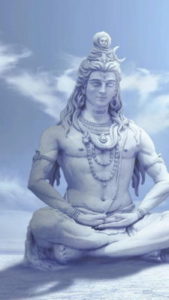
1. Kailashnath Mahadev Statue (Nepal – 143ft)
Kailashnath Mahadev Statue is the world’s tallest Shiva statue in standing pose. It is situated in Sanga, on the border of the Bhaktapur and Kavrepalanchwok districts in Nepal, about 20 km from Kathmandu. The color of the statue is copper and the face is serene, pleasant and welcoming to the believers and travelers. The statue is 143 feet (43.5 m) in height and is made using copper, zinc, concrete, and steel.
According to the List of statues by height, Kailashnath Mahadev is the world’s fortieth-tallest statue, four places after the Statue of Liberty. Due to the number of visitors, the statue has contributed to the religious tourism in Nepal, both locally and internationally. Designed to resemble images of the Hindu god, Lord Shiva, and seen as a marvel of Nepalese engineering, the statue’s construction began in 2003 and was completed in 2010.
2. Shiva Of Murudeshwara (Kannada, Karnataka – 122ft)
A statue of Lord Shiva is in Murudeshwara town in Bhatkal Taluq, Uttara Kannada District in Karnataka is the second biggest statue of Lord Shiva in the world after the statue in Nepal. The statue and temple are located on the beach in Murudeshwara, which lies on the Arabian Sea coastal line.
Shiva, here, is silver colored and seated. His eyes are open and pleasant. The ornaments and jewels are gold colored. The Murudeshwar Temple is one of the popular temples in Karnataka. It has a blend of modern and traditional architecture. The statue was built by Kashinath and financed by a businessman named R.N.Shetty.
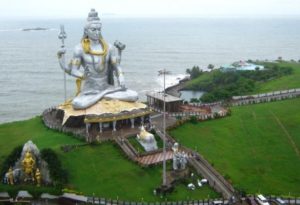
3. Sarveshwar Mahadev Statue (Sursagar Lake, Vadodara, Gujarat – 120ft)
Sur Sagar lake also known as the Chand Talao is a lake situated in the middle of the city of Vadodara in the State of Gujarat in India. A 120 ft tall statue of Lord Shiva built by Vadodara Mahanagar Seva Sadan stands in the middle of the lake.
The special lighting arrangement on this statue gives a tremendous effect during the late evening and night hours.
4. ‘Adiyogi’ Lord Shiva Statue (Coimbatore – 112ft)
The 112 feet tall ‘Adiyogi’ statue of the Hindu deity Lord Shiva with white Thirunamam at Coimbatore in the Indian state of Tamil Nadu; which has been recognized by the Guinness World Records as the “Largest Bust Sculpture” in the world.
The face of Adiyogi, set up by the Isha Foundation led by spiritual guru Jaggi Vasudev, attracts thousands of people every day. Sadhguru said that the statue is for inspiring and promoting yoga, and is named Adiyogi, which means “the first yogi” because Shiva is known as the originator of yoga.
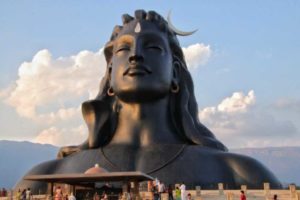
5. Namchi Statue (Siddheshwar Dham, Sikkim – 108 ft)
A unique pilgrim center with a 108 feet tall statue of Lord Shiva, this pilgrim center also has replicas of the twelve Jyotirlingas to offer one platform for Shiva devotees.
Siddhesvara Dham. Siddhesvara Dham in Sikkim created atop Solophok hilltop, 5km from Namchi, models of sacred Chardham Hindu Temples of Jagannath, Badrinath, Dwaraka and Rameswaram and an 18-feet statue of Kirateshwar a hunter incarnation of Shiva.
Solophok Hill has a historical fact in religious belief. In Hindu mythology, it is believed that Lord Shiva, after losing Sati in Agnikund, had gone into seclusion and became a hunter in the forests of Sikkim.
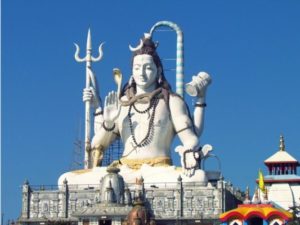
6. Mankamaeshwar Temple (Shiva Statue at Allahabad 108 ft)
Situated in the holy city of Allahabad, right on the banks of the holy River Ganga, this grand statue is often referred to as the Symbol of Allahad—the holy land of Sangam. The statue is located right where the famous and holy Kumbh Mela takes place at every regular interval. However, the most striking feature of this 33 meters high statue is the grand statue of a bull (Nandi) of Lord Shiva overlooking him.
7. Mangal Mahadev (Mauritius) 107ft
Mangal Mahadev is one of the unique statuses of Lord Shiva which is 107 feet tall and stands tall in the Ganga Talao Lake in Mauritius. During your visit to this sacred site, you will inevitably be awestruck by the gigantic statue of Lord Shiva, the Destroyer. However, fear not about your doom, at Grand Bassin you will find the Hindu God of destruction smiling and as peaceful as ever.
Although the lord is always seen in the backdrop of Himalayas, this statue is very unique. It stands tall in the hottest beach destination, Mauritius.
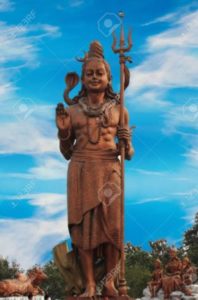
8. Shiva Of The Har-ki-Pauri (Haridwar) 101ft
Situated in the highly sacred place of the Hindus (Haridwar), this statue is as high as 30.5 m. At the banks of Ganges, Shiva blesses devotees and those who are keen on doing Badri yatra, take a glimpse of Shiva and continue their journey to Badri. The huge dimension of Lord Shiva of the Har-ki-Pauri is as high as 90 feet tall situated on the banks of river Ganga.
9. Shivagiri Statue (Bijapur, Karnataka) 85ft
Lord Shiva Statue is an 85 feet tall Shiva Statue that has been installed by the T.K. Patil Banakatti Charitable Trust in Vijayapura (Bijapur) on Sindagi Road. It is slowly making as a pilgrimage location. It was prepared by sculptors from Shimoga for above 13 months plus the civilian design was supplied by Bangalore-situated architects.
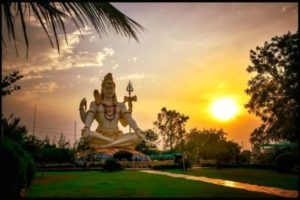
10. Nageshwar Statue (Dwarka, Gujarat) 82 feet
Nageshwar Statue is located at Daarukavanam near Dwarka, Gujarat. A huge yet attractive statue of Lord Shiva in the yogic posture is a major attraction Nageshwar Jyotirlinga Temple. Nageshvara Jyotirlinga is one of the 12 Jyotirlinga shrines of Lord Shiva. T-Series Music Company owner Late Gulshan Kumar renovated this temple and was later completed by his family after his death.
